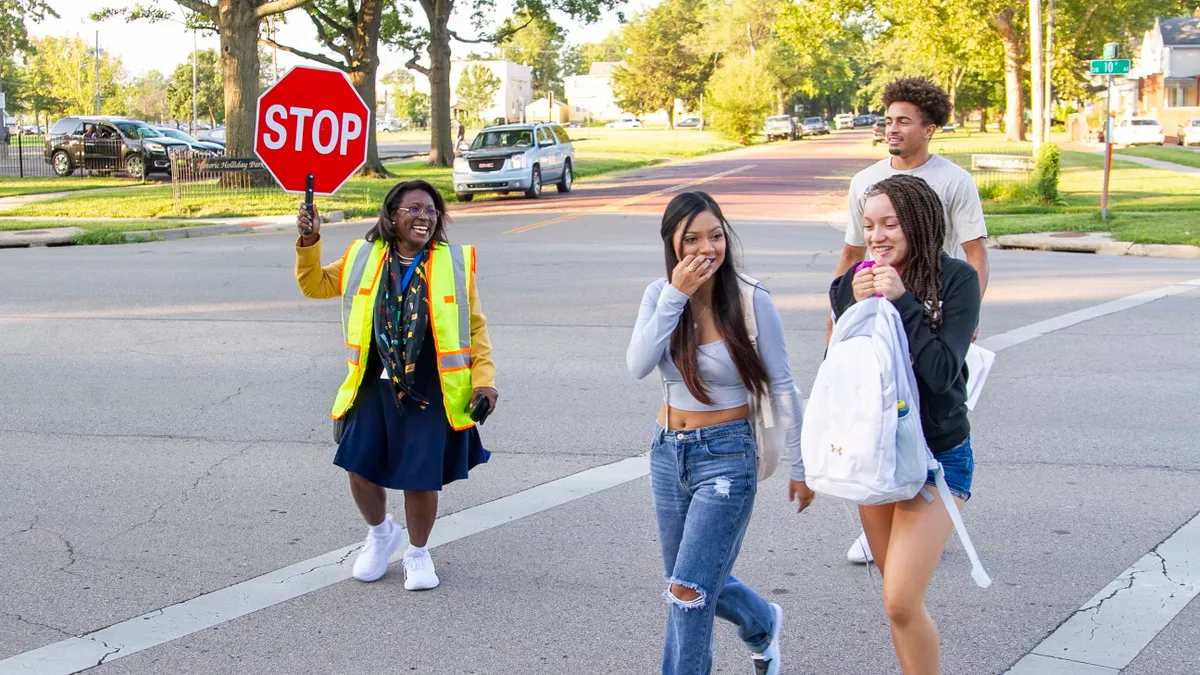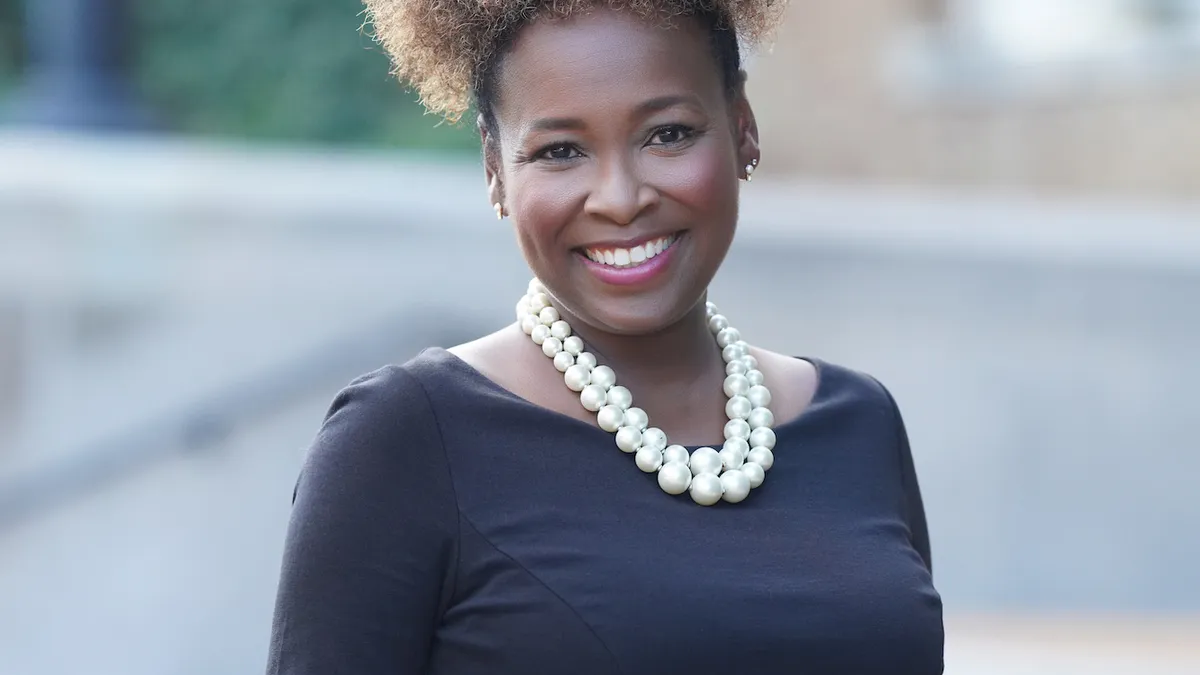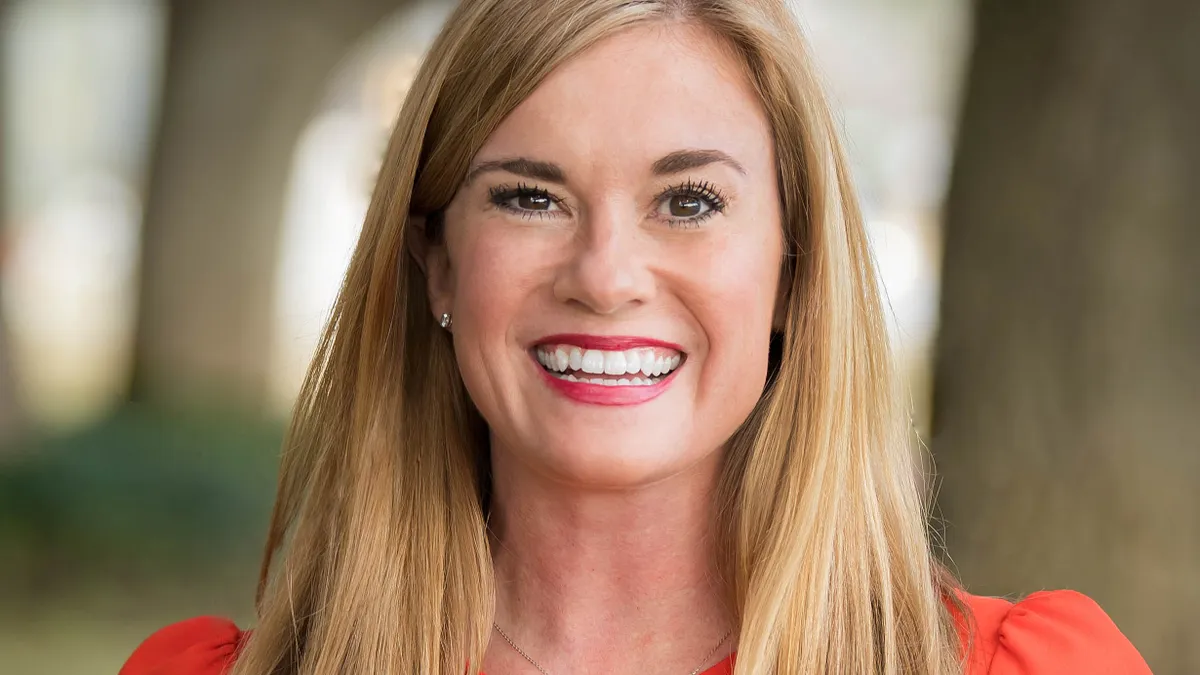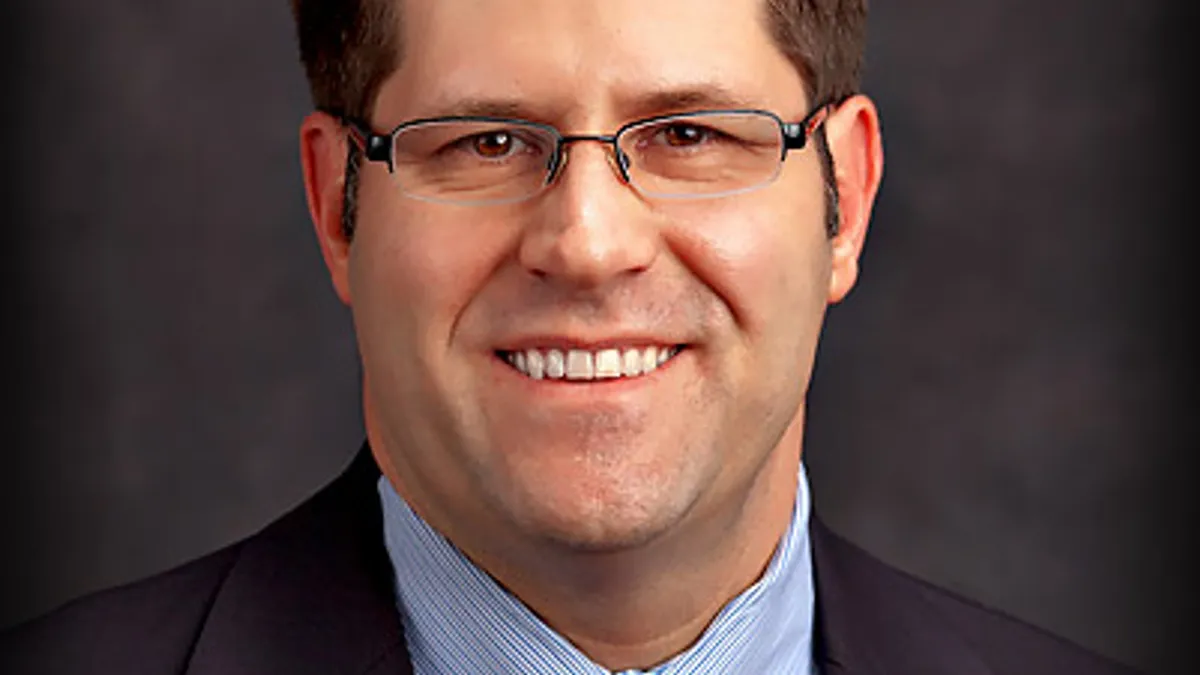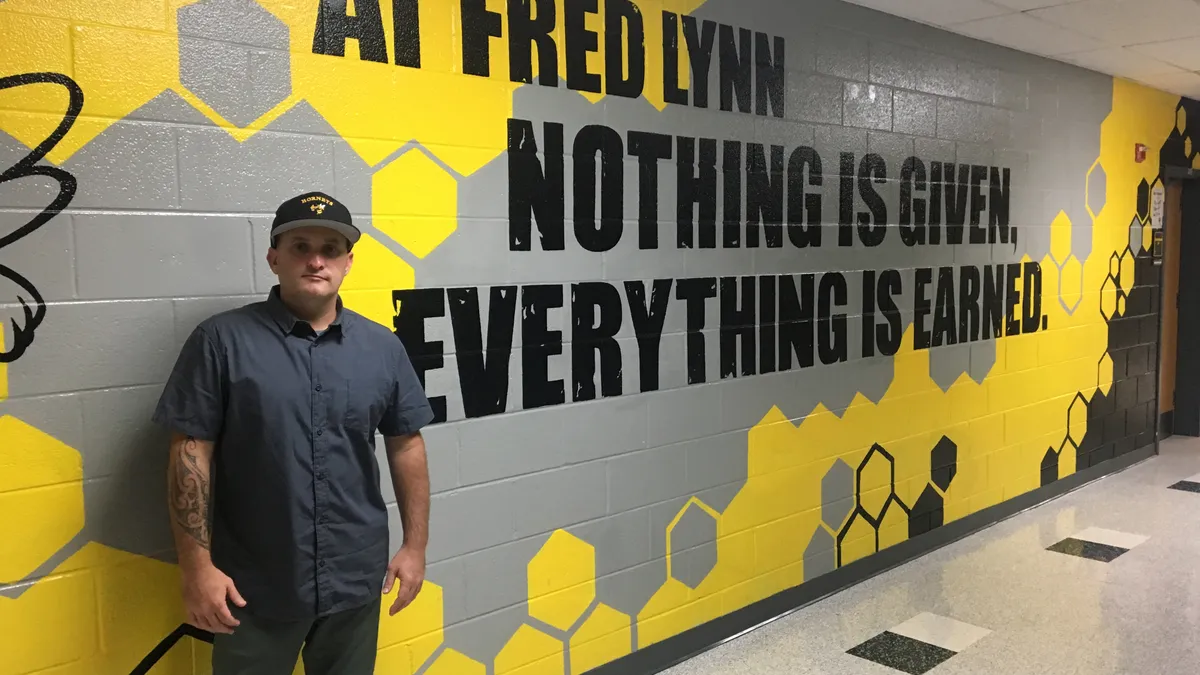Located in the heart of the Navajo Nation, Arizona’s Chinle Unified School District No. 24 is in a unique position among public school systems — it’s held accountable not only to state and federal law, but to tribal law as well.
The 3,320-student district has seven schools spread across 4,200 square miles. Its student population is 99% Native American, and 97% of that number are Navajo.
Superintendent Quincy Natay grew up in the community and served as assistant superintendent for business and finance for 23 years prior to his current decade in the district’s top spot. From this vantage point, he’s using both his familiarity of challenges facing families in Chinle and his knowledge of how to navigate budgetary opportunities to ensure the most positive outcomes for students.
From 2015 to 2019, his district's student pass rates on the Arizona state assessment increased at twice the pace of Arizona students overall. Prior to the pandemic, in 2019, the district was in its third year of producing the highest pass rates of any reservation district in the state on Arizona’s state assessments. It had also outperformed a number of nonreservation districts. Coming out of the pandemic, early indicators suggest the district is on pace to regain that ground from learning losses.
We recently had a chance to catch up with Natay to learn more about the challenges facing Chinle and how he sees a focus on curriculum, professional learning and a “pre-K to career” mindset as keys to the district’s successes.
Editor’s Note: The following interview has been edited for brevity and clarity.
K-12 DIVE: What are some of the unique challenges your district faces, and that districts on tribal lands face in general?
QUINCY NATAY: Well, just to put it into context, we cover 4,200 square miles. That's the area of my district. As far as property wealth, I can bond for just under $1 million if I wanted to go out for a bond issue. So I have very low property wealth, even though I have a vast area that we're covering.
We bus 6,000 miles a day. And about roughly 67% of those routes are on unimproved roads. So one of the challenges we have is transportation. We have situations where our buses are crossing routes that may become impassable because of monsoon seasons. Or when snow melts, it turns into mud, and that mud becomes a challenging situation for us to get the kids to and from school on a daily basis.
The other challenge we have is 60% of my population is unemployed. So I have a high amount of poverty in my district, and 97% of my students qualify for free and reduced-price meals.
Recruitment is always a challenge. Finding teachers in the specialty areas of science and math continues to be somewhat of a struggle — and of course, providing special ed services.
Right now, bus drivers seem to be the challenge. I have roughly 57 drivers, and currently I have 15 vacancies. And so imagine having to continue to manage a large, vast transportation program with reduced drivers.
And one more challenge I just want to highlight is I have to provide teacher housing, because we're on a reservation, and there's nowhere for staff to rent or buy housing. So I have 280 housing units I provide for my teachers and other support staff and administrators, because the closest town is Gallup, New Mexico, where if they’re lucky, they could find an apartment to rent or a home to buy.
And what about connectivity?
NATAY: Prepandemic, it wasn't really noticed because kids were coming in-person, but at the height of the pandemic, what we learned is connectivity is almost nonexistent in our communities, and we're doing everything we can as a district to help students with that.

We deployed a little over 30 buses districtwide. One, they were wired or equipped with WiFi service. Two, [we used them] to provide the two meals a day that we were giving to our students.
They were deployed across our 4,200 square miles, so we would have students who would approach the bus and literally study outside and connect to turn in their assignments or receive their homework online. I have a photo of two boys riding to a bus on horseback to get the meals and turn in homework or download the assignments given for that week or that day.
Despite all of these challenges, you've seen increases to student pass rates on the Arizona state assessment. What kind of efforts have you, as a district, had to take to make those advancements possible?
NATAY: When I first started, what we began with was getting everyone on the same page. The way we were able to do that is with a strategic plan that was developed … with input from all stakeholders, including families, students, and of course my governing board.
We adopted a curriculum that is well-used in a number of districts in Arizona, and it's a standards-based curriculum. Getting that early buy-in helped with the adoption and implementation, because you can adopt and buy the shiny red car, but the key is how are we going to implement it with fidelity?
Another key to our success is we've developed a professional learning community concept where we have cross-curricular, cross-grade-level meetings where the teachers talk about the curriculum and look at student outcomes.
Developing that school culture committed to student learning outcomes was key. I have two academic coaches in every building where they provide ongoing job-embedded PD [professional development], and we now have collaboration among teams and we're focused on accountability for learning.
And prioritizing pre-K and career education has also been a big part of that?
NATAY: Another huge move that we did was changing the concept of our district. I'm a proud graduate of Chinle High School myself. When I was in school, the thinking was that you get to 8th grade and that was good enough. Now, our philosophy is you are going to graduate from high school. We have changed the culture of our district so we're a “pre-K to career” district.
I started a preschool program because I believe strongly in literacy. I believe firmly that childhood literacy, reading at 3rd grade level, is key for our students to be successful.
We started a 4-year-old preschool program that's not funded by the state. We figured out a way to fund it. My first year, I had five classrooms of 4-year-olds, and we saw the results on what was happening with those students on how much better prepared they were going into kindergarten.
So we doubled that number. Today, I have 10 preschool classrooms for 4-year-olds because we're getting a jump on early literacy. They're learning about routines and procedures. They're getting that social interaction that we know is important. They're having an opportunity to play and make decisions. All of those things help elevate our early literacy focus.
We're educating our kids that college is possible and creating that whole culture of learning and excelling. We've been able to demonstrate that we were, prepandemic, closing that elusive achievement gap.
We have been hit just like every other district, where we saw learning loss. But when we look at the data, the amount of learning loss was similar to what Arizona experienced. For math and ELA [English language arts], we were at the same level of learning loss, whereas in other reservation districts, the learning loss was even more significant.
Our kids were virtual for two years practically, because the Navajo Nation would not allow students to be in-person — especially the first year, which was totally remote. The start of the second year, in 2021, I had to offer a virtual option, so about a third of my students remained virtual.
I'm happy to say all of my students are in-person this year, and we're already seeing the impacts on academics. We just gave our first benchmark, and we saw a lot of positive gains again. So we're back on track.
You mentioned the limited work opportunities on the reservation, so a lot of this programming really helps to potentially expand the opportunities available in the future to graduates of your schools.
NATAY: Yes. We have another program we call a “college academy” for parents. Basically it is a session for parents to learn, “What does it take to get my child to college, the military, or a vocational career? What do I have to do as a parent to help my child? What does it mean to fill out a FAFSA [Free Application for Federal Student Aid]? What are colleges looking for?”
We have partnered with colleges to come in and provide presentations. We have partnered with outside employment opportunities to provide presentations and information to parents on the possibilities that exist.
While that's going on, our kids are in another room, and they're learning — what they did last year was robotics and drones as their activity. And we provide day care services if needed so the parents can attend.
At the end, we have a little graduation ceremony where they come up and receive a certificate of participation. And again, it's an elementary student watching their parents walk up on a stage and receive a diploma or a certificate, and instilling in their minds that, “You know what, that's gonna be me someday walking across the stage to receive my high school diploma.”
Ultimately, what we're after is improving the quality of life for our students when they graduate from Chinle High School — increasing those opportunities for them so they know what is out there.
How have your experiences as assistant superintendent of finance helped you navigate these challenges as superintendent and introduce new programs?
NATAY: I think understanding the revenue sources and understanding the requirements within these programs significantly helps — knowing how you can reallocate resources and how you can strategically plan to make an impact on something we're pushing for. And knowing where to look to find those funds.
To give you another example, there was an opportunity for electric buses. We applied for a grant and were awarded a little over a million dollars through the state of Arizona, and we were able to purchase three electric buses.
When we first had our electric buses, we had what we call youth day, and we had [an electric bus] as one of the sites they could visit. One of the students was like, “Oh cool, I want to be a bus driver.” They're looking at working at some point in their future, whether it's a bus driver or whether it's being the superintendent of Chinle Unified School District. That's what we want.
I tell my staff I hope and pray of the 200 seniors we graduate, 20 come home and help us with their newfound skills — whether they're the best welder, whether they're the best carpenter, whether they're a teacher, whether they're an administrator, or whether they're an entrepreneur or an engineer to come and help make an impact on our community.
And the more that happens, that's how we change our socioeconomic status here in our community, because we're gonna begin to chisel away at that 60% unemployment rate that we experience.






 Dive Awards
Dive Awards











